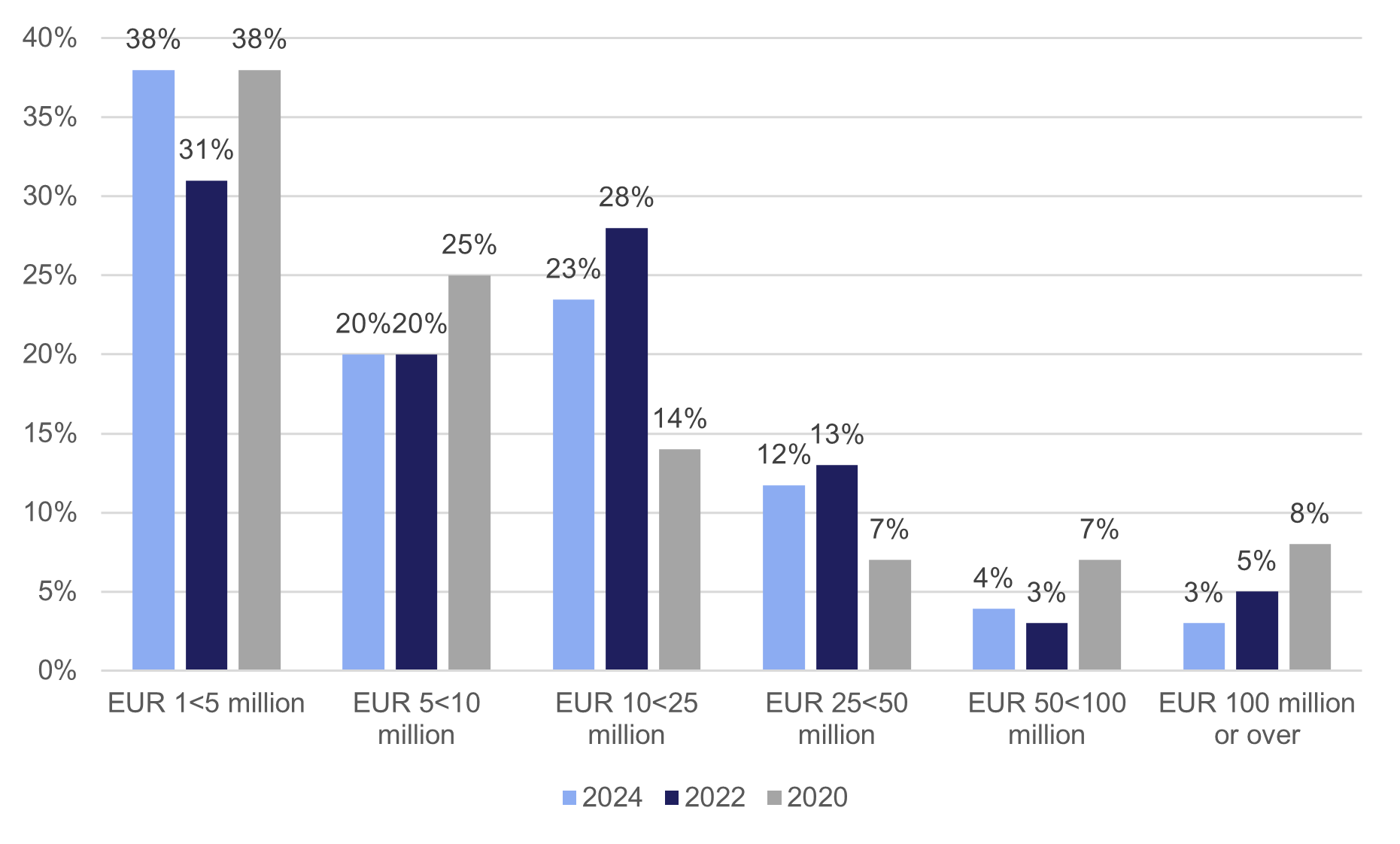Despite turbulent times in macroeconomic and geopolitical situations over the past few years, the Baltic M&A market has been reasonably active, especially in Lithuania, according to the recent “Baltic Private M&A Deal Points Study 2024”.
The study analysed 179 private M&A transactions with a deal value of over EUR 1 million completed in the Baltics between April 2022 and March 2024. It was conducted for the 8th time since 2009 in cooperation with Sorainen, Cobalt, Ellex, TGS Baltic, Eversheds Sutherland, Walless, and Triniti under the auspices of the Estonian, Latvian, and Lithuanian Private Equity and Venture Capital Associations.
Energy and utilities sector takes the lead
While the tech sector was the most active in M&A transactions in 2022, energy and utilities have taken the lead, amounting to 23% of all the transactions during the latest survey period. Technology holds second place but has dropped significantly from 25% in 2022 to 12% in 2024, followed by construction and real estate (10%), manufacturing and industrial equipment (9%), and retail/wholesale (9%) sectors.
Baltic sellers and buyers dominating
Local sellers continue dominating the market, with the most active sellers in Estonia and Lithuania. Similarly to previous periods, most targets operate in only one Baltic country. The increased share of Lithuanian transactions also reflects the continuously high activity in the Lithuanian M&A market compared to Estonian and Latvian markets during the relevant period.
Exits by strategic investors have increased compared to the 2022 study (from 46% to 53%), while the share of private equity exits remained relatively low (16%). The sale of family-controlled businesses has decreased somewhat (from 36% in 2022 to 29% in 2024).
Estonians remain the most active buyers within the Baltics, but Lithuanian buyers have become considerably more active in recent years. Among foreign investors, German and Swedish buyers stand out with a high activity level. Conversely to the 2022 market situation, in 2024, the nature of the buyer is most similar to the data from 2020, with individuals and family offices significantly decreasing (from 36% in 2022 to 2% in 2024) while the share of strategic investors and management buy-outs increasing (from 46% in 2022 to 70% as in 2020 and 2024).
The value of a typical Baltic M&A transaction fell back to the EUR 1-10 million bracket
The value of median M&A transactions has moved slightly downwards, as 58% were under EUR 10 million. Also, the share of megadeals (over EUR 100 million) continued a downward trend (from 8% in 2020 to 5% in 2022 and reaching 3% in 2024).

In 2024, some new questions were introduced to expand the amount of valuable data. In conclusion, Baltic M&A counterparties are comfortable using internationally acknowledged transaction tools, such as price adjustments, MAC clauses, and liability limitations (warranty limitation periods, overall caps, claim baskets, and thresholds). However, R&W insurance is still very seldom used in Baltic M&A transactions.
Find the Baltic Private M&A Deal Points Study 2024 here.
You might also be interested in the previous edition of Baltic Private M&A Deal Points Study 2022.
If you have any further questions, please contact our Corporate and M&A team or the project lead, partner Toomas Prangli.



